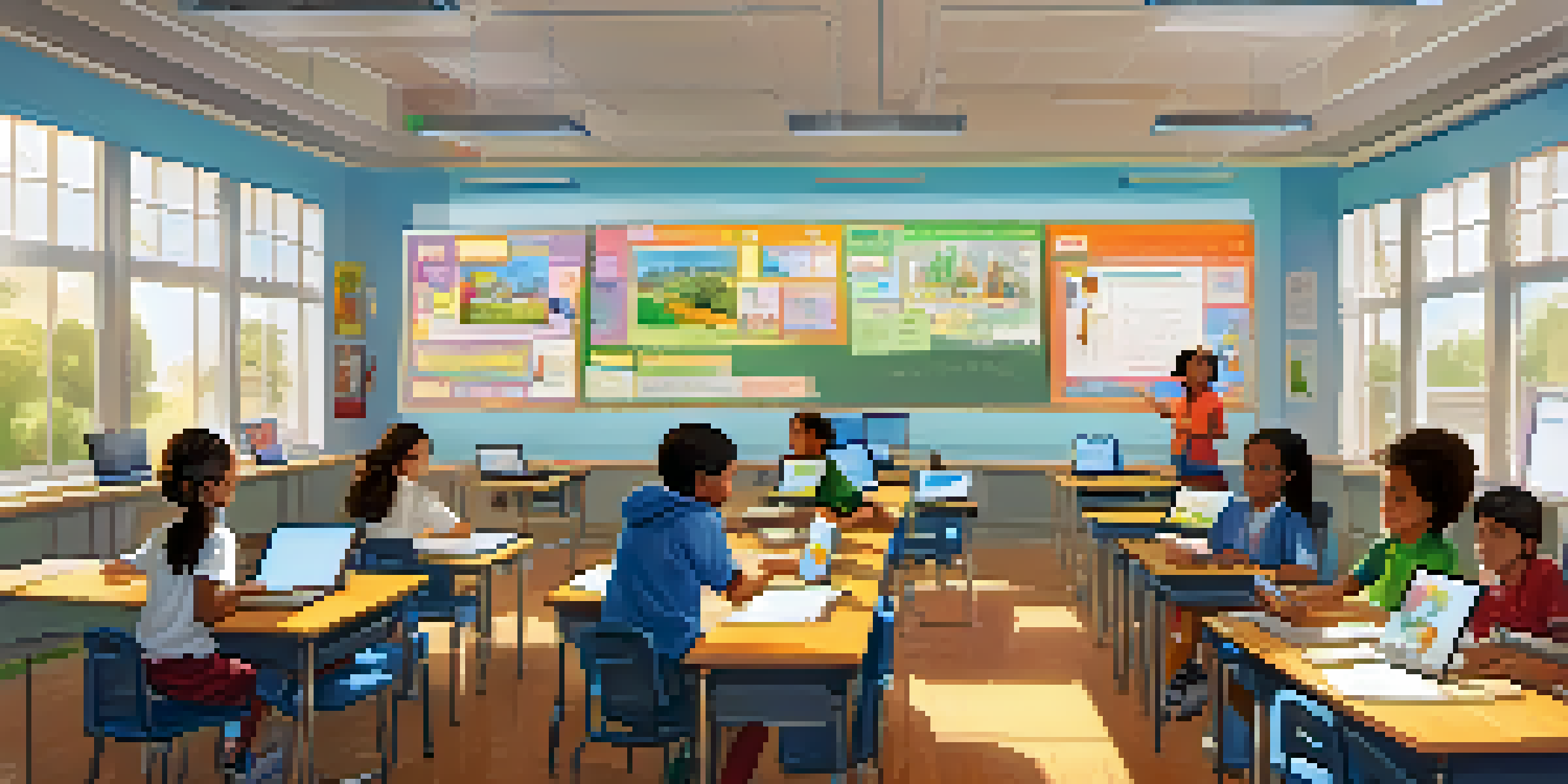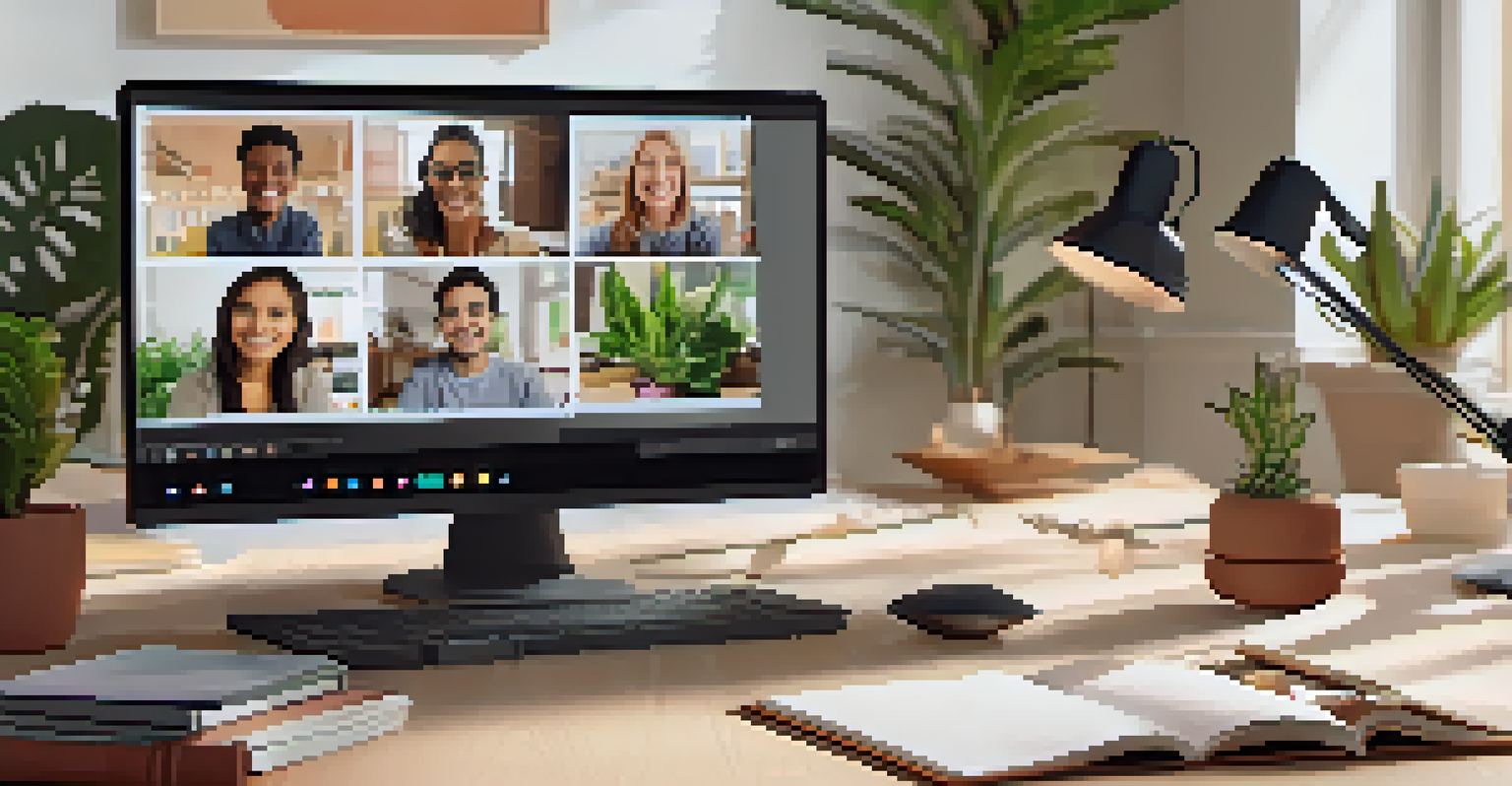Best Practices for Facilitating Blended Learning Classes

Understanding Blended Learning: A Brief Overview
Blended learning combines traditional face-to-face instruction with online learning elements. This approach offers flexibility and personalized learning experiences for students. By merging these two modalities, educators can cater to diverse learning styles and needs, making education more accessible and engaging.
Blended learning is not just a strategy; it's a pathway to personalizing education in a way that meets the diverse needs of learners.
One key aspect of blended learning is that it allows for a more student-centered approach. Learners can take control of their education, progressing at their own pace while still benefiting from direct interaction with teachers. This balance fosters a sense of ownership and responsibility in students, which can enhance motivation.
As educators explore blended learning, it's essential to recognize the technology involved. Choosing the right digital tools can streamline communication, facilitate collaboration, and create a supportive learning environment. By harnessing technology effectively, teachers can elevate the blended learning experience for everyone involved.
Setting Clear Learning Objectives and Outcomes
Establishing clear learning objectives is crucial in any educational setting, but especially in blended learning. These objectives serve as a roadmap for both instructors and students, guiding the learning process. When everyone knows what is expected, it creates a focused and purposeful environment.

Moreover, well-defined outcomes help in assessing students’ progress effectively. By regularly evaluating whether these outcomes are being met, educators can make necessary adjustments to their teaching strategies. This flexibility ensures that students remain on track and engaged throughout their learning journey.
Blended Learning Enhances Engagement
By combining traditional and online methods, blended learning caters to diverse student needs and promotes active participation.
Communicating these objectives clearly to students also fosters transparency. Students are more likely to stay motivated and engaged when they understand the purpose behind their tasks and how they relate to their overall goals. This connection can lead to a deeper investment in their learning.
Creating a Supportive Online Learning Environment
A supportive online learning environment is essential for encouraging student engagement in blended learning. This includes fostering a sense of community where students feel comfortable sharing ideas and asking questions. Utilizing discussion forums, group projects, or interactive tools can help build these connections.
The goal of education is not to fill a bucket, but to light a fire.
Additionally, providing resources and support for students who may struggle with technology is vital. Not every student is tech-savvy, and offering tutorials or one-on-one assistance can help bridge the gap. When students feel supported, they are more likely to participate actively in both online and in-person components.
It’s also important to set clear expectations for online interactions. Establishing guidelines for communication, participation, and collaboration helps maintain a respectful and productive learning atmosphere. When everyone knows the ground rules, it contributes to a more positive experience for all.
Incorporating Varied Teaching Methods and Activities
One of the hallmarks of blended learning is the opportunity to incorporate varied teaching methods. By mixing lectures, discussions, hands-on activities, and multimedia resources, educators can cater to different learning preferences. This variety keeps students engaged and helps reinforce concepts in multiple ways.
For instance, using videos or interactive simulations can appeal to visual and kinesthetic learners, while discussions and readings might better serve auditory learners. By diversifying instructional methods, educators can enhance understanding and retention of material. This approach not only makes learning more enjoyable but also more effective.
Clear Objectives Guide Learning
Establishing clear learning objectives helps both educators and students stay focused and aligned in their educational journey.
Additionally, blending synchronous and asynchronous activities can further enrich the learning experience. While synchronous sessions allow for real-time interaction and feedback, asynchronous tasks offer flexibility for students to learn at their own pace. Combining both ensures that all learners have the opportunity to thrive.
Fostering Communication and Collaboration Among Students
Effective communication is vital in any learning environment, especially in blended learning setups. Encouraging students to express their thoughts and collaborate with peers can lead to richer discussions and deeper understanding. Using tools like chat rooms or group projects can facilitate this interaction.
Collaboration also allows students to learn from one another, which can be particularly beneficial in diverse classrooms. When students work together, they bring unique perspectives and ideas to the table, enhancing the overall learning experience. This collaboration fosters teamwork skills that are essential in today’s world.
Moreover, regular check-ins and feedback sessions can help maintain open lines of communication. By providing opportunities for students to voice concerns or share insights, educators can create a more responsive learning environment. This proactive approach ensures that students feel heard and valued.
Utilizing Technology Effectively in Blended Learning
Technology plays a crucial role in the success of blended learning environments. Selecting the right tools can streamline instruction and enhance engagement, making the learning experience more dynamic. From learning management systems to collaborative apps, the choices are vast, but each tool should serve a specific educational purpose.
Moreover, it's important to provide students with training on these tools to maximize their effectiveness. When students are comfortable with the technology, they are more likely to participate actively in online components. This training can also alleviate any anxiety associated with using unfamiliar platforms.
Technology Boosts Learning Success
Effectively utilizing technology and providing proper training can enhance the blended learning experience and foster student collaboration.
Finally, regularly assessing the effectiveness of the technology being used is key. Gathering feedback from students about their experiences can help educators make informed decisions about what works and what doesn’t. This ongoing reflection ensures that technology enhances, rather than hinders, the learning process.
Assessing Student Progress in Blended Learning
Assessing student progress in a blended learning environment requires a blend of traditional and innovative strategies. Formative assessments, such as quizzes or reflections, can be conducted online to gauge understanding continuously. This approach allows educators to identify areas where students may need additional support.
Additionally, incorporating peer assessments can foster a culture of collaboration and accountability. When students evaluate each other's work, they gain insight into different perspectives and learning styles. This method not only helps them understand the material better but also encourages them to take ownership of their learning.

Moreover, providing timely feedback is essential for student growth. Regularly communicating with students about their performance helps them recognize strengths and areas for improvement. This constructive feedback loop builds a supportive environment where students feel motivated to excel.
Encouraging Lifelong Learning and Self-Directed Skills
One of the ultimate goals of blended learning is to foster lifelong learning habits in students. By encouraging self-directed learning, educators can equip students with the skills they need to continue their education beyond the classroom. This approach cultivates curiosity and a desire for continuous improvement.
Encouraging students to set personal learning goals and reflect on their progress can empower them to take charge of their education. Providing resources and strategies for self-assessment helps students become more aware of their strengths and weaknesses. This self-awareness is crucial for personal and academic growth.
Finally, instilling a growth mindset is essential in promoting lifelong learning. When students understand that effort and persistence lead to improvement, they are more likely to embrace challenges. This mindset not only enhances their current learning experience but also sets the foundation for future success.